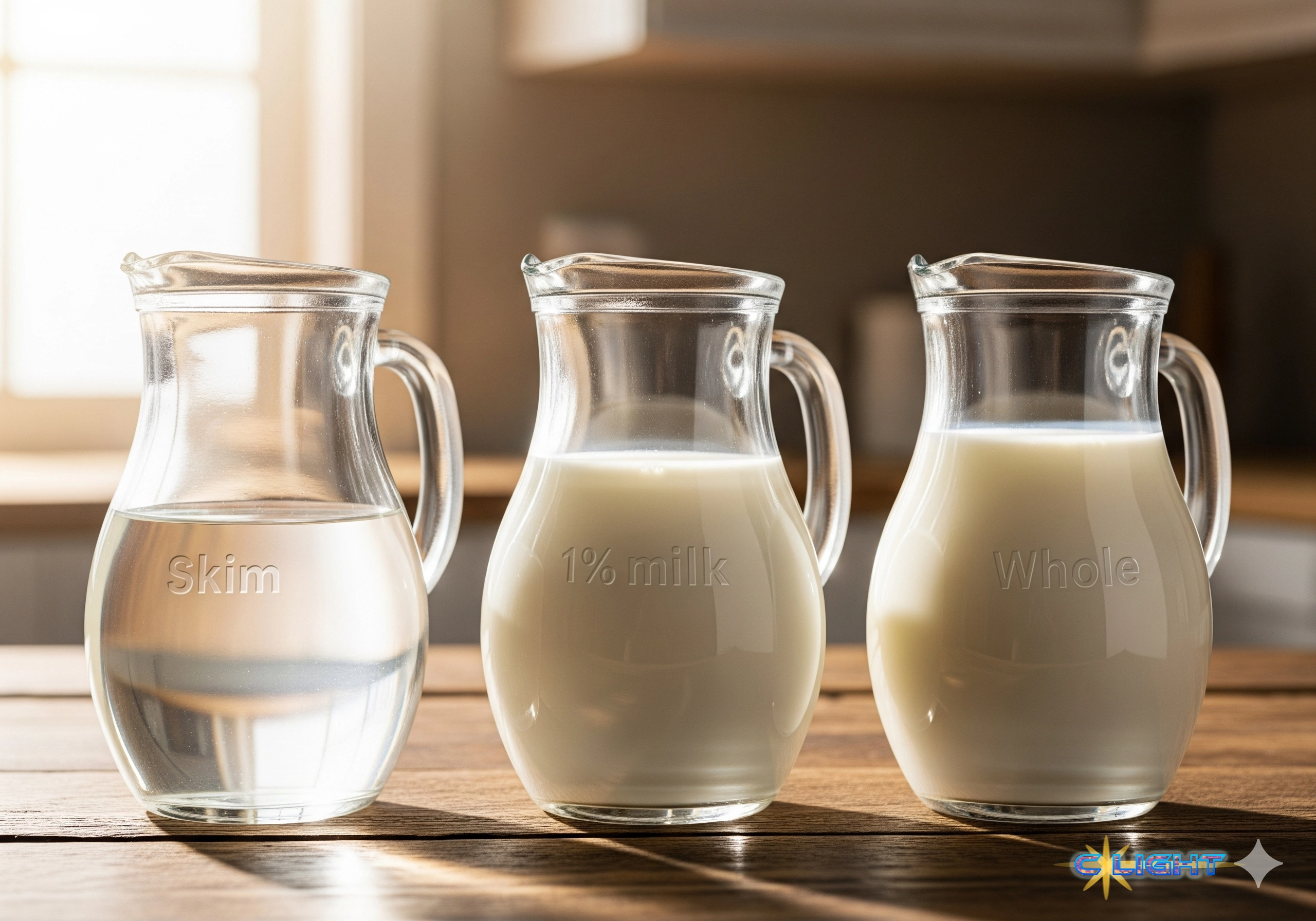5 minutes read time.
For generations, the message from the dairy aisle has been clear and unambiguous: a virtuous halo glowed around the skim and 1% cartons, while the whole milk in its crimson-capped jug was treated as a dietary pariah. This low-fat dogma, born in the 1960s and codified in decades of national nutrition guidelines, instructed Americans that to protect their hearts, they must strip the fat from their milk. But today, that simple directive is crumbling under the weight of new scientific inquiry and, in a uniquely modern twist, a forceful political push from the Trump administration to put whole milk back on school lunch trays. The resulting confusion has left many consumers wondering: has the nutritional advice we’ve followed for half a century been wrong? The answer, science reveals, is far more complex and surprising than a simple yes or no.
The original case against full-fat dairy was built on a seemingly logical syllogism: high intake of saturated fat was shown to raise levels of LDL (“bad”) cholesterol; high LDL cholesterol is a known risk factor for heart disease; therefore, saturated fat from foods like whole milk must cause heart disease. This assumption became public policy in the 1970s, launching the low-fat craze that dominated the food industry for decades. Yet, as a growing chorus of nutrition scientists now argues, this foundational evidence was largely “circumstantial.” As researcher Benoît Lamarche of Université Laval bluntly puts it, there has never been “strict and rigorous evidence” proving that full-fat dairy is demonstrably worse for your health than its low-fat counterparts.
The modern scientific understanding of milk fat is far more nuanced. While saturated fat does raise LDL cholesterol, it also raises HDL (“good”) cholesterol, which is protective against heart disease. Furthermore, it appears to change the nature of the LDL particles themselves, shifting them from the small, dense, and most damaging type to larger, less harmful particles. This is compounded by the “food matrix” concept—the idea that a nutrient’s effect is dictated by the food that delivers it. The saturated fat in a slice of cheese, which also contains protein, calcium, and bioactive compounds, behaves differently in the body than the same amount of saturated fat from butter. As Professor Richard Bruno of Ohio State University notes, “the saturated fat from dairy foods doesn’t seem to be behaving the way we think it should behave.”

This leads to the central, critical question that reframes the entire debate: What are you replacing the fat with? The Washington Post recently highlighted the “replacement principle,” which shows that the health benefits of choosing low-fat dairy are completely dependent on what fills the caloric void. If a consumer swaps whole milk for skim but replaces those fat calories with a sugary beverage or a bagel, they are likely worse off. A landmark 30-year study of over 200,000 adults confirmed this: replacing dairy foods with plant-based proteins like nuts and soy was associated with a lower risk of mortality, while replacing them with red meat was associated with a higher risk. The context of the overall diet is paramount.
Perhaps the most startling revelations from recent research are the unforeseen benefits linked directly to full-fat dairy. For many, the primary motivation for choosing skim milk is weight management, assuming the extra fat and calories in whole milk lead to weight gain. Yet, a large body of evidence now suggests the opposite may be true. A 2016 study of over 18,000 women found that a higher intake of full-fat dairy was associated with a lower risk of weight gain over 11 years. A 2020 review of 29 studies on children found no link between full-fat dairy and weight or fat gain. While the exact mechanisms are still being studied, the consistent connection between full-fat dairy and lower body weight upends one of the main arguments against it.
Beyond weight, higher-fat milk boasts other nutritional advantages. It contains significantly more heart-healthy omega-3 fatty acids than its low-fat counterparts, a difference that is even more pronounced in organic, grass-fed milk. Some studies have also linked whole milk consumption to a lower risk of metabolic syndrome, a cluster of conditions that increases the risk of heart disease, stroke, and type 2 diabetes.

This complex and evolving scientific landscape is the backdrop for a looming political decision. The Trump administration’s “Make Our Children Healthy Again Strategy,” championed by Health Secretary Robert F. Kennedy, is expected to upend the current guidelines and remove restrictions on whole milk in schools. This move, however, would likely be in direct opposition to the recommendation of the government’s own scientific advisory committee, which, after reviewing the evidence, concluded it could not draw a firm conclusion and advised against changing the existing guidelines. This sets the stage for a classic showdown where a political agenda may override a cautious scientific consensus.
For the average consumer standing perplexed in the dairy aisle, the takeaway is one of liberation from dietary absolutism. The decades-long war on milk fat was overly simplistic. For a healthy individual without high cholesterol or heart disease, the choice between skim and whole milk is likely far less consequential to long-term health than previously believed. The decision may now be based on personal goals rather than fear: skim milk offers a nutrient-dense protein and calcium boost for fewer calories, while whole milk offers greater satiety, more omega-3s, and may even aid in weight management. The real villain in our diet is not the fat in a glass of milk, but the broader pattern of consuming ultra-processed foods, refined carbohydrates, and sugar. The era of fearing the red cap is over; the era of embracing nuance has begun.
Discover more from Clight Morning Analysis
Subscribe to get the latest posts sent to your email.










